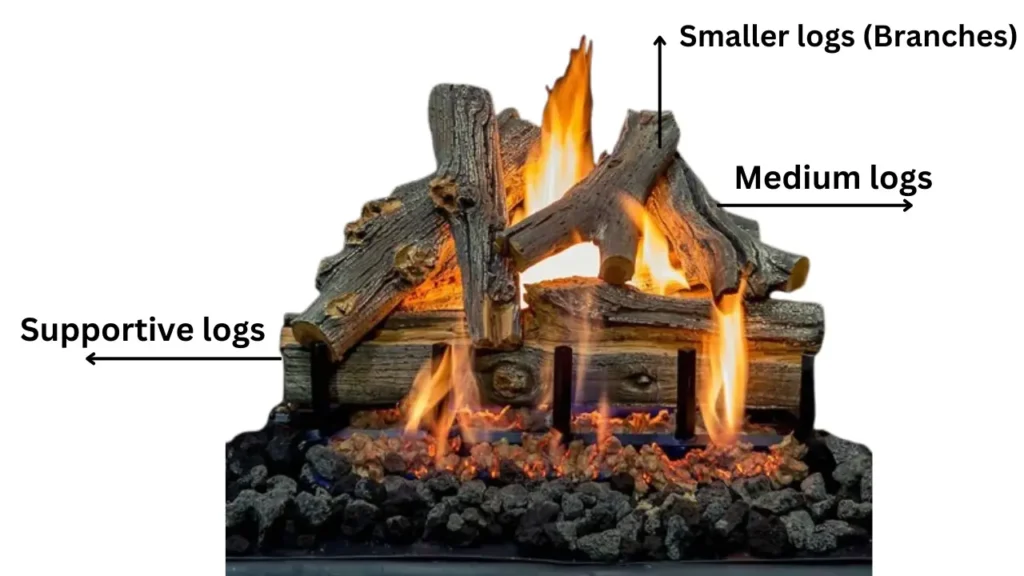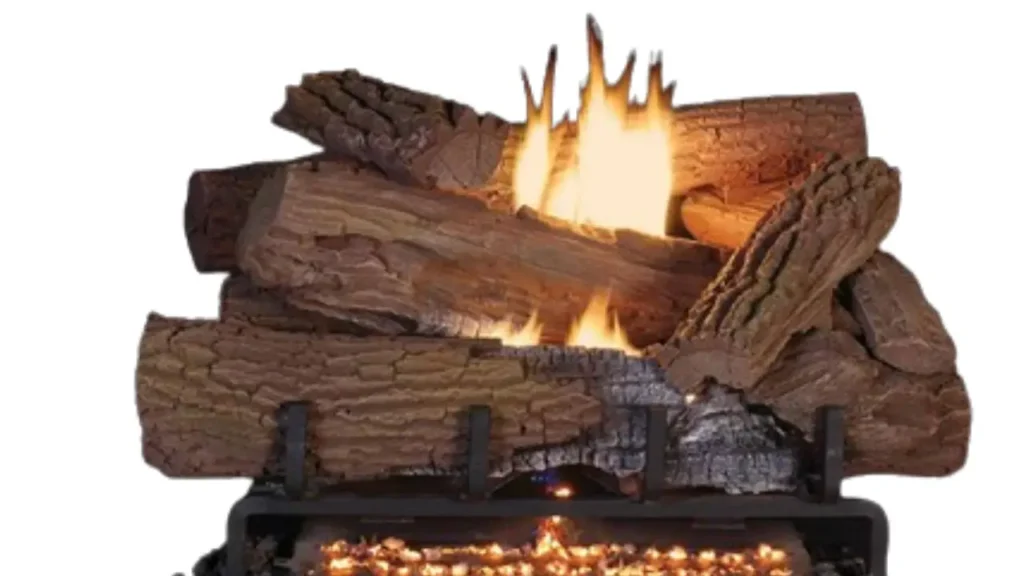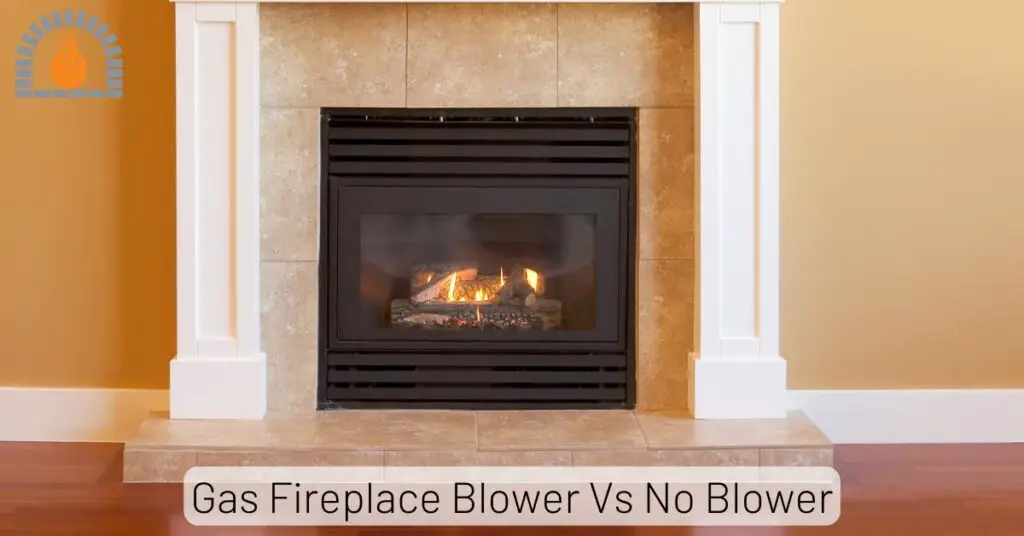Arranging fake gas fireplace logs may seem like a minor detail, but it actually plays a huge role in how realistic and appealing your fireplace will look. Correctly arranged logs not only improve the visual appeal of the flames but also enhance safety and performance.
placement of gas fireplace logs for a realistic and cozy look is easier than you might think!
Let’s dive into easy DIY tips and tricks for achieving a natural, eye-catching log arrangement in your gas fireplace.
How to Arrange Gas Fireplace Logs
For a natural look, arrange gas fireplace fake logs by placing the largest logs at the base. These simulate the supportive logs found at the bottom of a woodpile. Next, layer medium logs on top, angling them to create gaps where flames can rise. Use smaller logs or “branches” for the top layer, positioning them in varied directions to achieve a casual, asymmetrical look.
Ensure that the logs don’t obstruct the burner ports to keep your fireplace running efficiently and safely. Always follow manufacturer guidelines for your specific log set.
This setup not only mimics a real woodpile but also enhances airflow for a lifelike flame display.

Step By Step Arrangement of Fake Gas Fireplace Logs
Step 1: Know Your Log Kit Layout
For placement of gas fireplace logs most log kits come with instructions or diagrams showing the optimal layout. However, if you’re going for a custom look, follow these steps to create a natural appearance.
Step 2: Place the Large Logs First
Start by placing the largest logs at the base of the fireplace, as they’re often used to simulate larger, supportive logs at the bottom of a woodpile.
Position them evenly across the burner and check for balanced gas flow. Make sure you’re not blocking the burner ports, as this can affect the flame quality.
Step 3: Add the Medium-Sized Logs
Next, layer medium logs over the larger ones, angling them to create gaps where flames can rise. For a natural effect, think about how logs fall randomly in a real wood fire.
Slightly tilt or stack these medium logs so that flames can peek through, adding depth to the look.
Step 4: Finish with Smaller Logs
Use smaller logs or “branches” to create the top layer. These should be placed in different directions for a casual, asymmetrical look.
Use them to fill any remaining gaps and add texture to the log arrangement.
Step 5: Fine-Tune for Airflow and Aesthetic
After arranging the logs, double-check that none are blocking any essential vents or burner ports. This setup helps improve airflow and ensures the flames stay steady and safe.
Step 6: Add Embers and Rock Wool for a Realistic Glow
For added realism, scatter ember material or rock wool around the logs to create a warm, glowing effect when the fireplace is on. Place them sparingly around the burner areas for a smoldering look that mimics real embers.

Essential Guidelines for Arranging Fake Logs in Gas Fireplaces
-
Improperly placed logs can block gas flow, leading to poor flame performance or safety hazards. Make sure there’s a clear path for gas to reach the burners.
-
Emulate the look of a naturally arranged wood pile by staggering the logs and avoiding overly symmetrical patterns.
-
Logs should be placed close enough to the burner for heat distribution but not directly over it, to avoid blocking flames and causing irregular burn patterns.
Common Mistakes to Avoid
Overcrowding the Logs
Placing too many logs in the fireplace can restrict airflow, which impacts flame performance.
Crowded logs can also create an unnaturally stacked look that detracts from the fireplace’s overall appearance.
Neglecting the Manufacturer’s Guide
The manufacturer’s guide is designed with both safety and aesthetic considerations in mind.
Ignoring these guidelines could lead to uneven flames or even damage to your logs. Always consult this guide for placement tips specific to your fireplace model.
Placing Logs Too Close to Burners
If logs are placed too close to the burners, they can distort the flame pattern and may cause soot to build up on the logs.
This reduces the realistic appearance of the fire and may require more frequent cleaning or repositioning of the logs.
Maintenance Tips for a Realistic Look
Keeping your fake gas fireplace logs looking fresh and realistic requires minimal maintenance but is essential for a long-lasting, beautiful display.
Dust, soot, and residue can accumulate on your fireplace logs over time, diminishing their realistic look. Gently clean the logs every few months by brushing off dust and using a soft cloth to remove any soot.
Avoid using water or cleaning agents, as these can damage the logs’ finish.
Over time, even high-quality logs can develop small cracks or discoloration due to heat exposure. Regularly inspect your logs for any damage. If you notice cracks or chips, it may be time to consider replacing them to maintain a clean and realistic look.
If your fireplace includes ember materials like glowing embers or fire glass, make sure these are spread evenly around the base of the logs.
Replace ember materials as needed to ensure they continue to give off a lifelike, soft glow.
Troubleshooting Log Arrangement Issues
If your fireplace isn’t looking or functioning as you hoped, a few simple adjustments to the log arrangement can help.
Uneven Flames
If you’re noticing uneven flames, it could be due to obstructed burners.
Adjust the logs slightly to create small gaps that allow gas to flow evenly around the logs, which will result in a more consistent flame pattern.
Unpleasant Odors
A new fireplace or freshly arranged logs may emit a slight odor during the first few uses. If you experience strong or persistent smells, check that logs aren’t blocking any gas outlets or causing soot to accumulate.
Reposition logs to improve airflow and consult the manufacturer’s guide if odors persist.
Reduced Flame Visibility
Logs can sometimes obstruct the view of the flames, making them appear less vibrant.
Adjust the placement of your top and middle logs to open up more space for flame visibility, creating a balanced look that shows off the fire’s glow.
FAQs
Can I place the fake logs directly on the burner?
No, it’s best to avoid placing logs directly on the burner, as this can disrupt the flame pattern and cause an uneven burn. Instead, follow the manufacturer’s recommended placement guide to maintain airflow and proper flame visibility.
How often should I clean my fake gas fireplace logs?
Cleaning every few months is ideal to remove any dust or soot that can accumulate on the logs. A gentle brush or cloth should suffice, and no harsh chemicals are needed.
Is it safe to rearrange the logs myself?
Yes, as long as the fireplace is turned off and completely cool. Wearing gloves is recommended to protect your hands and keep the logs clean during the process.
What should I do if my flames look uneven or too small?
Uneven or small flames can be a sign of blocked burners or improper log placement. Try rearranging the logs to improve airflow and consult your manufacturer’s guide for tips specific to your fireplace model.
Can I use real wood with fake gas fireplace logs?
No, real wood should not be used in a gas fireplace designed for fake logs. Real wood can cause serious safety issues, including smoke buildup, poor ventilation, and potential gas line damage.
Affiliate Disclosure: Fireplaceadviser.com is a participant in the Amazon Services LLC Associates Program. We may earn a commission when you click on certain links on this site and purchase.

Hello!! I am Jamal Khan. I often fix my home electric heaters and gas stove problems and research the common issues in the heating units to improve my knowledge and expertise. The aim of establishing fireplaceadviser.com is to share my expertise and knowledge with my audience.













The fire (Gas) turns off about a half hour after starting . Not a diminished shut down but a sudden shut down . Any thoughts ? I rearrange the logs but the shut down still occurs .
Hello Allan,
Thanks for approaching us. One common reason is a malfunctioning thermocouple, which is a safety device that monitors the pilot light and controls the gas flow. If the thermocouple is dirty, bent, or faulty, it may not detect the pilot light properly, leading to an unexpected shutdown. Additionally, problems with the pilot light itself can cause the fireplace logs to turn off; if it goes out due to drafts or low gas pressure, the fireplace will shut down as a safety measure.
Another possible factor could be gas supply issues. If there is an obstruction in the gas line or if the gas supply is inconsistent, the fireplace may not receive enough fuel to maintain combustion, resulting in a sudden stop.
Furthermore, safety features like oxygen depletion sensors or overheat protection can trigger shutdowns if they detect unsafe conditions in the environment.
If troubleshooting these elements does not resolve the problem, consulting a professional technician is advisable to diagnose and fix any underlying issues safely.
If you need any further assistance let us know, our team will respond shortly.